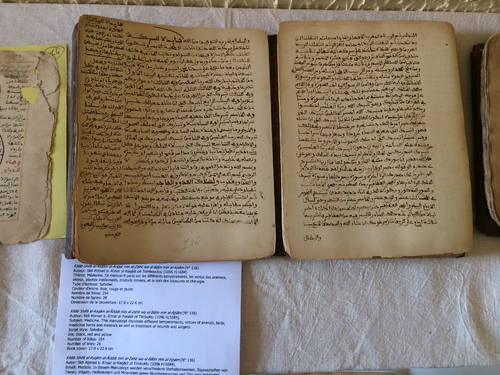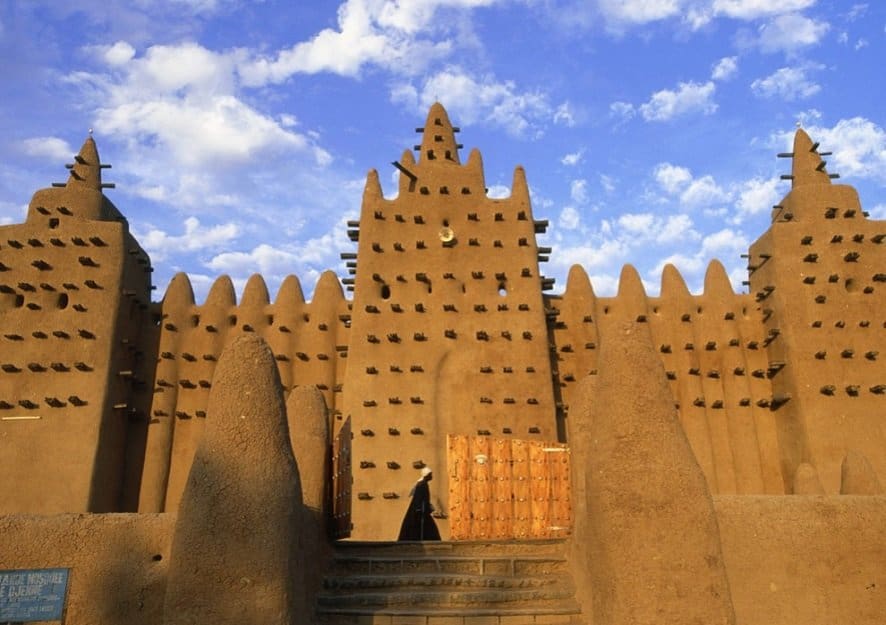The city of Timbuktu, located in West Africa’s Mali, was one of the three richest places in the world in the 14th and 15th centuries. While Western Europe was living in an era known as the Dark Ages, Timbuktu was seen as an important intellectual and scientific center, and the home of the first university in the world, the University of Sankoré
Although Timbuktu today does not show the beauty it had in its heyday, the city had an estimated population of 115,000 inhabitants, which is 5 times more than that of medieval London. The United Nations Educational, Scientific and Cultural Organization UNESCO made it a cultural heritage site in 1988.
This remarkable African city flourished during the rule of Mansa Musa, who was the emperor of the Mali empire, in the 14th century, and considered the richest man in the world who ever lived. The empire covered Mali, Senegal, Guinea and Gambia. When he died, Musa was worth the equivalent of 400 billion US dollars. At that time, the Mali empire produced more than half of the world’s supply of gold and salt.
When Musa went on a pilgrimage to Mecca in 1324, he took so much gold that the value of that metal fell for 10 years in the region. 60,000 people accompanied him on this pilgrimage.
But even before Musa’s reign, Timbuktu could be considered a powerful intellectual and scientific hub. It was there that the University of Sankore was founded— the first university in the world, according to some Historians.
The University of Sankore attracted students from all over the Islamic world (even from the Arabian Peninsula), where they could study medicine and surgery, astronomy, mathematics, physics, chemistry, philosophy, language and linguistics, geography, history, as well as art.

Photo Credit: Lazare Eloundou
Along with Sankore, Djinguereber and Sidi Yahya formed the three main centers of learning and medieval writings.
The university was made up of other independent schools and faculties, and each master had its own school. Students followed a single professor, and classes were held in open courtyards within the university premises or in private residences. The sale and purchase of books became an even more lucrative market than the local gold trade.
In Timbuktu, there are still thousands of books and manuscripts that have survived over time. Writings include medicine, mathematics, law, astronomy and poetry.
From 1460 onward, the Mali Empire was plagued with succession disputes at certain critical stages, including several civil wars, and finally the Mali Empire faced its downfall in the 15th century. It was succeeded by the Songhai Empire. After becoming independent of France in 1960, Mali began suffering several domestic crises.
In 2012, the country suffered a coup d’Etat after which Islamist fighters capture several towns. Since then, numerous mausoleums of its sanctuaries have been destroyed. Many of the priceless scriptures were burned by Jihadists, before their removal in 2015.

Courtesy of: UNESCO Bureau of Mali
UNESCO ensured it will do everything to save what is left. But the once thriving Timbuktu has now turned into a ghost town, where residents live in fear and poverty.
In 2016, the International Criminal Court (ICC) found the jihadist leader Ahmed Al-Faqi Al-Mahdi guilty of war crimes. He was sentenced to 9 years in prison for his responsibility in the deliberate destruction in 2012 of nine mausoleums and the secret gate of the Sidi Yahia mosque in Timbuktu.
“The decision of the International Criminal Court is a landmark in gaining recognition for the importance of heritage for humanity as a whole and for the communities that have preserved it over the centuries. It also supports UNESCO’s conviction that heritage has a major role to play in reconstruction and peace building,” said the Director-General of UNESCO, Irina Bokova after the verdict was announced.





